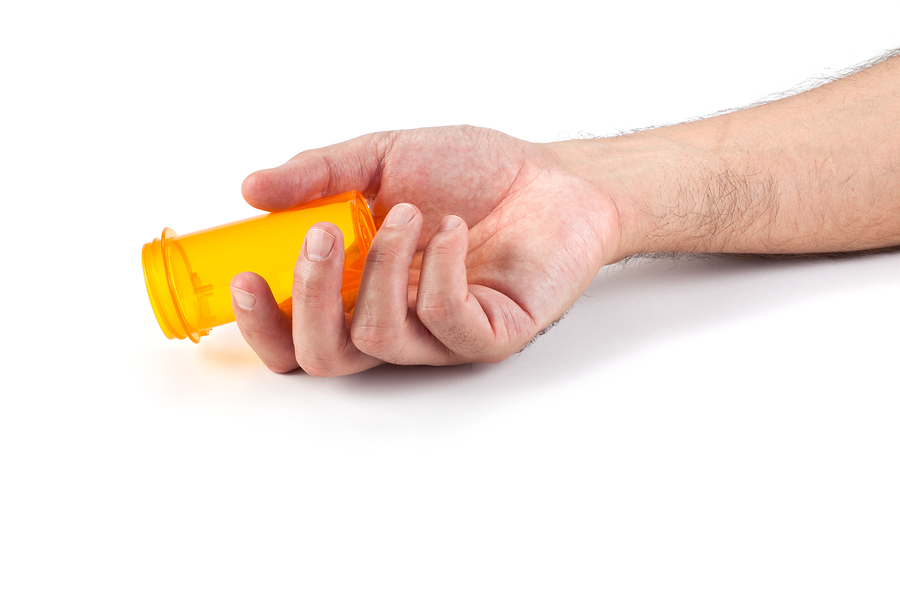How Common Is Opioid Addiction?
/By Roger Chriss, PNN Columnist
As the opioid crisis continues to worsen, there is increased scrutiny of both prescribing levels and fatal overdose rates. The goal of reducing opioid prescriptions is to decrease the exposure to opioids, on the theory that medical use of opioid analgesics is closely linked with addiction and overdose risk.
But how valid is that theory? A key issue in the crisis is opioid addiction rates, which can be divided into medical and non-medical addiction.
Medical Opioid Addiction Rates
The National Institute on Drug Abuse (NIDA) reports that 8 to 12% of patients on long-term opioid therapy develop an opioid use disorder.
“The best and most recent estimate of the percentage of patients who will develop an addiction after being prescribed an opioid analgesic for long-term management of their chronic pain stands at around 8 percent,” NIDA Director Nora Volkow, MD, told Opioid Watch.
The NIDA estimate is well-researched and widely accepted. But there are other estimates, each with important qualifications.
Cochrane found in a major review of studies of long term opioid therapy for non-cancer pain that only 0.27% of participants were at risk of opioid addiction, abuse or other serious side effects.
In another large study, The BMJ reported that only about 3% of previously opioid naïve patients (new to opioids) continued to use them more than 90 days after major elective surgery.
Other addiction rates include numbers as low as 1% and as high as 40%. But details matter. Much of the difference in addiction rates stems from three factors:
How well screened the patient population is
How carefully monitored the patients are during opioid therapy
How the criteria for opioid use disorder are applied
In other words, a well-screened and closely monitored population of adults with no risk factors may well have an addiction rate of 1%. The recent SPACE study by Erin Krebs, MD, in which over 100 people with knee osteoarthritis and low back pain were put on opioid therapy for a year, saw no signs of misuse, abuse or addiction. There were also no overdoses.
Non-Medical Opioid Addiction Rates
It’s also important to look at the percentage of people who become addicted to opioids without ever having an opioid prescription. Here the addiction rates are much higher.
A 2009 study in the American Journal of Psychiatry found that among treatment-seeking individuals who used OxyContin, 78% had not been prescribed the drug for any medical reason. The OxyContin was “most frequently obtained from nonmedical sources as part of a broader and longer-term pattern of multiple substance abuse.”
The 2014 National Survey on Drug Use also found that about 75% of all opioid misuse starts outside medical care, with over half of opioid abusers reporting that the drugs were obtained “from a friend or relative for free.”
Heroin is considered highly addictive, with nearly one in four heroin users becoming dependent. Importantly, most people who try heroin already have extensive experience with other substances, including opioid medication, and many have serious mental illness. There is no research on the addictive potential of heroin in drug-naive people.
Relatively little is known about the complex and concealed world of nonmedical opioid use. Researchers like UCSF’s Daniel Cicerone are working to fill this gap by collecting information on overdoses to get a more accurate picture on the type of opioids being used.
Risk Management
Opioids remain an essential part of modern medicine, from trauma and battlefield medicine to surgery, end-of-life care and long-term management of chronic, progressive degenerative conditions. This makes risk management vital.
Current tools to screen patients include the long-standing COMM tool and the new NIDA TAPS tool. Novel approaches using genetic testing for opioid risk may eventually help clinicians better assess risk, too. And improved data analytics may also help reduce addiction.
"Understanding the pooled effect of risk factors can help physicians develop effective and individualized pain management strategies with a lower risk of prolonged opioid use," says Ara Nazarian, PhD, a researcher at Beth Israel Deaconess Medical Center.
The Krebs SPACE study achieved an admirable level of safety by carefully screening and monitoring patients during opioid therapy. A similar patient-focused approach that acknowledges the low rate of medical opioid addiction and works to minimize it further is likely to bring benefits to both individuals and society at large.
Roger Chriss lives with Ehlers Danlos syndrome and is a proud member of the Ehlers-Danlos Society. Roger is a technical consultant in Washington state, where he specializes in mathematics and research.
The information in this column should not be considered as professional medical advice, diagnosis or treatment. It is for informational purposes only and represents the author’s opinions alone. It does not inherently express or reflect the views, opinions and/or positions of Pain News Network.


























